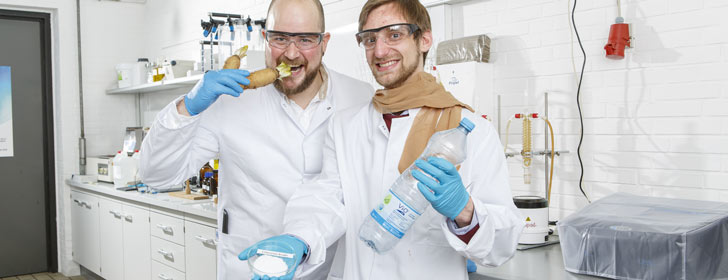Plastic from the field

Cellulose, inulin and other carbohydrates built from C6 sugars can be converted to 5-hydroxymethylfurfural (HMF). HMF is considered one of the most important platform chemicals in the bioeconomy. It can be used through further chemical transformations to produce beverage bottles (PEF), food packaging, fibers for car seats, as nylon for stockings, sportswear, car parts, etc. Currently, work is underway using chicory roots, waste bakery products and miscanthus as input materials (Video: Die Rohstoff-Pioniere).
Especially the application of chicory roots shows a special concept: The first reaction step takes place in the beet itself. When forcing for salad production, enzymes are released in the beet that cleave long-chain inulin. In this way, it can be better dissolved in water and converted to HMF. Therefore, the process for this biomass is relatively simple and consists of a small number of modules (TEDxUniHeidelberg: Bio-Based Plastics from Agricultural Waste).
The plant in the biorefinery pilot plant is modular. For example, a plant for the conversion of waste bakery products to HMF has an additional module compared to chicory beet. The plant for converting miscanthus to HMF consists of a module for breaking down lignocelluloses, an isomerization process, and the actual HMF modules. The latter consist of the reactor for conversion to HMF and a unit for separating HMF from water (Video: Plastik vom Chicorée?; 2021 FICOTA Uni Hohenheim makes plastics made from agricultural waste).
To obtain furfural and phenols, both starting materials for synthetic resin, one again needs individual modules that can be combined. This enables the production of biogenic chipboard and plywood Alternatively, carbon materials can be obtained from the lignin.
